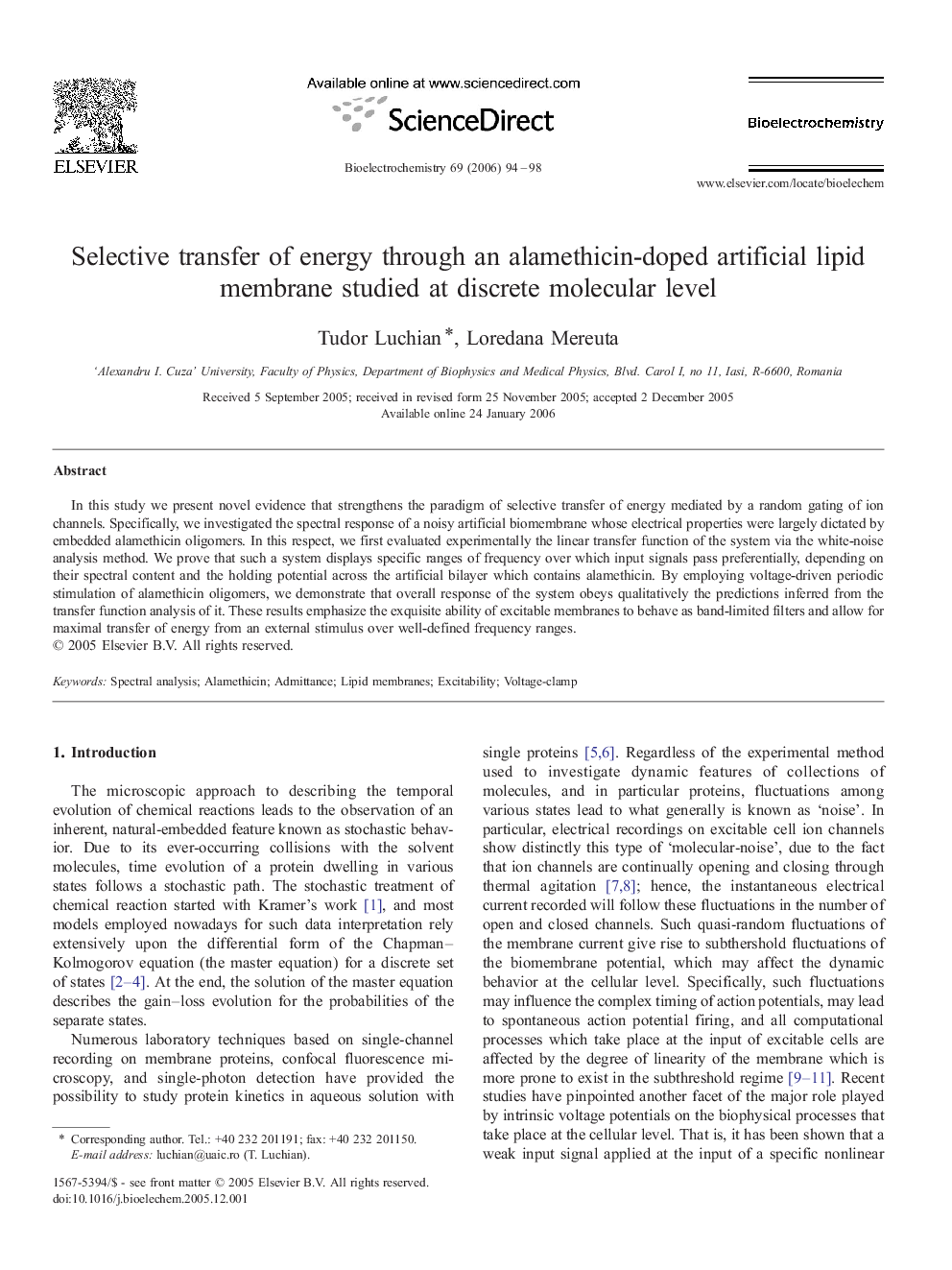| Article ID | Journal | Published Year | Pages | File Type |
|---|---|---|---|---|
| 1267487 | Bioelectrochemistry | 2006 | 5 Pages |
In this study we present novel evidence that strengthens the paradigm of selective transfer of energy mediated by a random gating of ion channels. Specifically, we investigated the spectral response of a noisy artificial biomembrane whose electrical properties were largely dictated by embedded alamethicin oligomers. In this respect, we first evaluated experimentally the linear transfer function of the system via the white-noise analysis method. We prove that such a system displays specific ranges of frequency over which input signals pass preferentially, depending on their spectral content and the holding potential across the artificial bilayer which contains alamethicin. By employing voltage-driven periodic stimulation of alamethicin oligomers, we demonstrate that overall response of the system obeys qualitatively the predictions inferred from the transfer function analysis of it. These results emphasize the exquisite ability of excitable membranes to behave as band-limited filters and allow for maximal transfer of energy from an external stimulus over well-defined frequency ranges.
